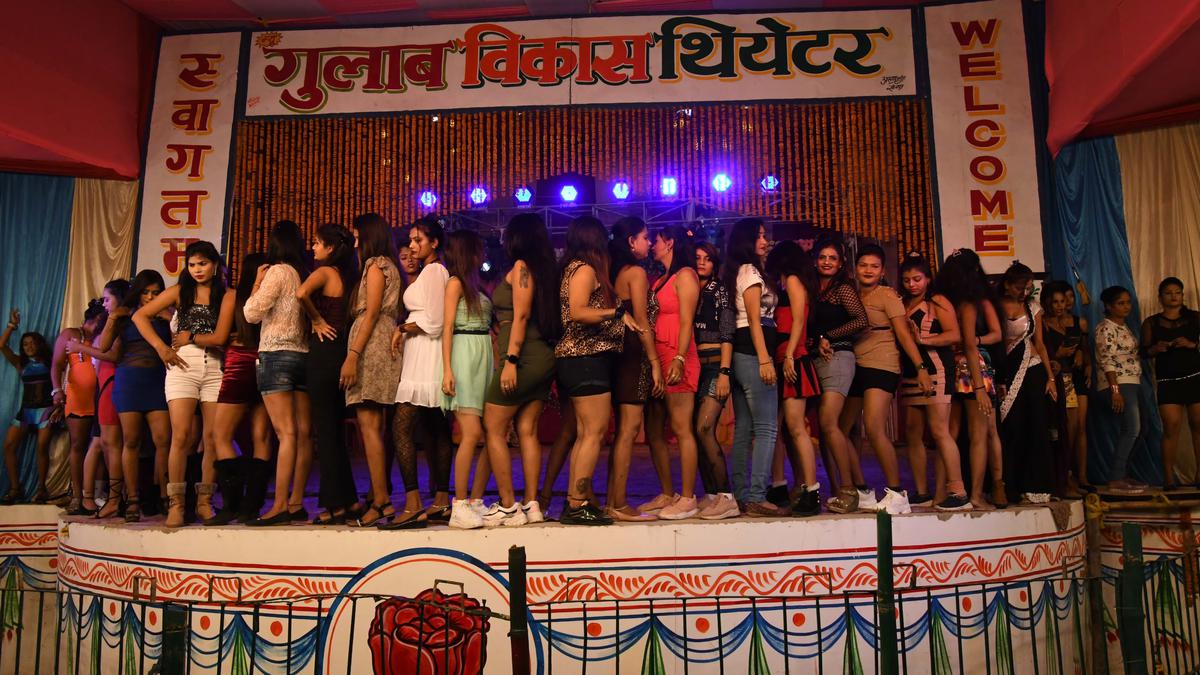
The women who dance after dark at the Sonepur animal fair
The Hindu
At Sonepur, women dance for money, and men come to watch them, but no one talks about it. Diya Kumari and her colleagues are part of a forgotten world, where they are both the performers and the forgotten. At Sonepur, Diya Kumari and her colleagues dance for money, while men watch. They are part of a forgotten world, where they are both performers and forgotten. They take precautions to stay safe, and earn up to ₹1.5 lakh during the month-long fair. Despite the smutty jokes and suggestive signs, the women take care of each other and their families.
“This is my life now, and they are my family,” says Diya Kumari (name changed to protect privacy), 22, pointing to a group of women around her. She is a part of the New Gulab Vikas Theatre located in Sonepur, Saran district, Bihar, and dances at the yearly animal fair.
Over three years ago, Kumari, from Siliguri, was sold to a brothel in Varanasi by her then boyfriend, for ₹50,000. She was pregnant at the time. A friend, who worked at an ‘orchestra’ in Bokaro, advised her to leave, if she didn’t want to abort the child. Kumari ran away and found a job at the theatre. “My daughter is three. My father is a rickshaw puller, and I am the oldest among three sisters. After leaving home, I have not contacted my family.”
The month-long Sonepur mela that begins every year on Karthik Poornima — full moon night — is believed to have begun during the reign of Chandragupta Maurya, in the 4th century BC. Once considered Asia’s largest cattle fair, it is held every year in November-December.
Manvendra Kumar Singh, the seniormost member of the organising committee, Harihar Kshetra Sonepur Mela, and associated with it for the past 50 years says, “Chandragupta would source elephants and horses for his stables from here. Earlier, wild animals and rare birds would be sold, until that was banned. There were always theatres, but earlier, historical folklore was performed. From the 1980s, things changed,” he says, referring to theatre companies introducing bawdy performances by women.
Until about 20 years ago, attendance at the mela’s daytime proceedings would be at 5-7 lakh daily. Now, it is 50,000, with the number doubling at night, when the area is transformed into a performance space, with five theatre companies setting up their infrastructure across the approximately 2.5 sq km. In the daytime, there are 55 big and small stalls, some of Bihar government departments, selling agricultural equipment at subsides rates.
Besides New Gulab Vikas Theatre, this year there are New India, Shobha Samrat, Payal Ek Nazar, and Samrat Theatre, each employing about 50 women. Singh remembers a time when there’d be 30 theatres, but claims the administration does not encourage it anymore.
The show begins at about 6 p.m. with announcements, spanning the next 45 minutes: “Sahiban meherban kadaradan, aayee New Gulab Vikas Theatre par. Jitna pocket allow kare utna mein aayyee aur maza lutiya kamseen hasinayo ke naach ka (Respectable Connoisseur, come to New Gulab Vikas Theatre. Pay what your pocket allows. Enjoy the dance of these beautiful women).”













